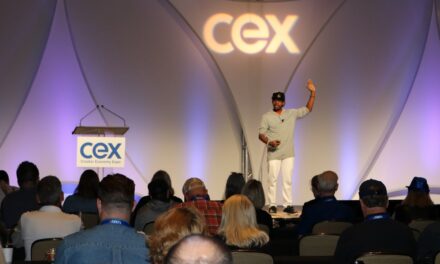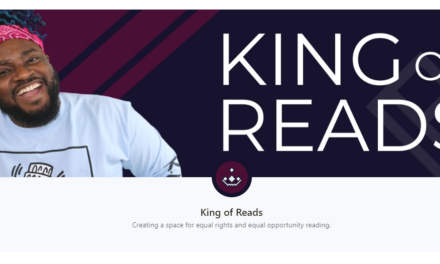Data Fuels the Machine
Programmatic offers the potential to reach the right person at the right time for both branding and direct response objectives, but none of that can happen without data. Data is so integral to programmatic that not having a solid chunk of it can be an impediment. It’s something Ana Villegas, marketing director of Dell’s North America commercial business, discovered after an initial programmatic pilot more than 2 years ago didn’t produce a change in the engagement of customers coming to Dell’s site.
“I needed to expand my data,” she says. “I had to grow my internal data through time-the more time passes, the more data we are gathering about how customers are interacting with our site. And I also needed to get data externally from third parties.”
Being able to work with more data is contributing to what Villegas describes as “amazing” results from programmatic advertising. The tactic is bringing Dell quality customers in terms of engagement, and they cost about 40% less to obtain than they would through other traditional digital tactics such as broad-reach publications and display ads that are not bought programmatically.
Dell devoted about 30% of its spend on a recent U.S. campaign for programmatic advertising, but Villegas expects that number will rise for future efforts. “As we gather more and more data, we should be able to shift more and more [dollars] to programmatic,” she says.
Customer Data Is Beneficial but Not Essential
The importance of first-party data is an impetus for enterprises to properly tag their websites to understand their visitors’ behaviors, says Emily Frankel, VP of marketing at the online car resale company Vroom.
“[Tagging] is important for building your segments on your own site and understanding what additional data you have that could better inform your buying,” she says.
Frankel says gathering and organizing customer data enables companies to answer questions that include the following: Are there certain signals or actions that people take on my website that make them attractive to go after and message against? Are there repeat customers versus new customers? And how do I speak to those people differently?
Nonetheless, not having a lot of first-party data doesn’t have to be a barrier, says Meshekow. Marketers can still leverage second-party data-such as information exchanged with noncompetitors-and third-party data. SITO Mobile, for instance, is able to identify anonymous targets in real time by incorporating their current and previous location information, data about applications they have signed into, and contextual data such as publishers they’ve visited.
Optimization Is a Key Benefit of Programmatic
Data plays other important roles in programmatic. “As campaigns run, data science can interpret what signals matter most and optimize a marketer’s campaign almost instantaneously,” says Craig Teich, EVP of sales and business development at Connexity, which specializes in building and buying programmatic audiences.
Teich says efforts can be optimized by variables that include audience, website, ad size, and position on the page. “With programmatic, technology captures performance data and optimizes campaigns in real time, eliminating the need for time-consuming back and forth between the advertiser and publisher,” he says.
Meanwhile, programmatic can also reveal information about prospects that buyers can use to enhance targeting in future efforts. For instance, campaigns aimed at information technology professionals helped Bayer learn that many of the targets like hip hop music and gaming. “Moving forward, we added specific blogs and gaming websites into our online purchase because we knew these people spent a lot of time there,” she says.
Getting Started With Programmatic
There’s a lot to do and learn before jumping into programmatic. Getting a handle on your data is a big requirement. Here are some others:
Identify your target audience, but start off with some slack. “You definitely want to have a very clear picture of who your audience is going into it,” Bayer says. “Age, gender, location, typical buying behavior-like maybe someone’s more likely to buy on a certain day of the week or a certain time. You want to have all that information.”
That said, you could miss out on potential opportunities if your parameters are too narrow, she adds. “Typically, you start more broad and leave some categories open,” Bayer says. “As the campaign starts going and you start seeing conversions and start making connections between different data points and people who are more likely to convert, you can narrow in that way.”
Evaluate whether to work with a DSP directly or to work through an agency. “It’s technical, and all the different [DSP] vendors have their own interfaces, but if you can mentally handle what it takes to run very complex Facebook campaigns or very complex AdWords campaigns, for example, you’ll be fine [working directly with] a DSP,” Penn says. “If you’re the sort of business executive who just doesn’t have enough time in the day to learn yet another system, then you want to go the agency route, and you can just give them the budget, resources, and target audience you want to reach.”
Have discussions with your agency or DSP about reducing bot fraud. One complaint about programmatic exchanges is that without a human to negotiate a deal with, marketers could be buying ads on sites that only have bot traffic. Another risk is that the individual targets DSPs are bidding on may actually be bots in disguise.
Teich says one way marketers can reduce the risk of bot fraud without hiring an ad verification company is to target audiences with rich data profiles. “If there are multiple data points on an audience member from a range of online activities, then there is a lower risk that the ad will be shown to an impression bot,” he says.
Build infrastructure to support the demanding creative needs of programmatic. “You don’t know what inventory is available at any given time, so you have to create multiple sizes of each version of your creative to get the most out of your buy,” Bayer says.
Likewise, Dell’s recent campaign offered content to address interests at every part of the customer journey. “Depending on what [a visitor’s] interacting with, I can show different types of content, and that’s going to the core of what programmatic is, which is really offering the customer the best content at the best time and the best location,” says Villegas. “But in order to do that, you have to have all the content possible [that] someone may need or want.”
Given the demands of creative optimization, it’s important to be agile in content production. Villegas meets with her team weekly to determine which content changes to make based on engagement metrics. “Programmatic is high-maintenance,” she says. “You have to have your creative in order.”
Taking these and other steps could make programmatic a valuable tool. “For us, it has proved it’s absolutely worth doing,” Villegas says. “It’s just you have to take into account there are a lot of pieces you need to invest in to make it happen.”






